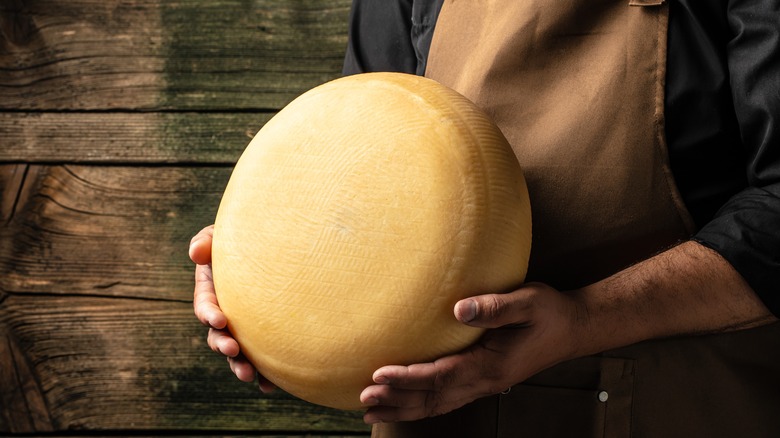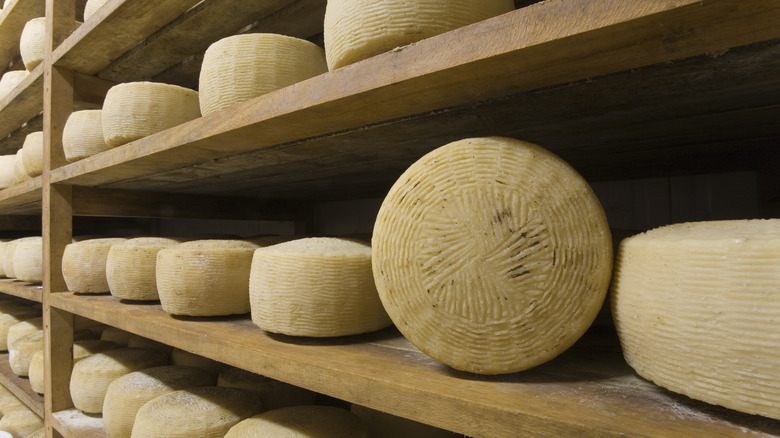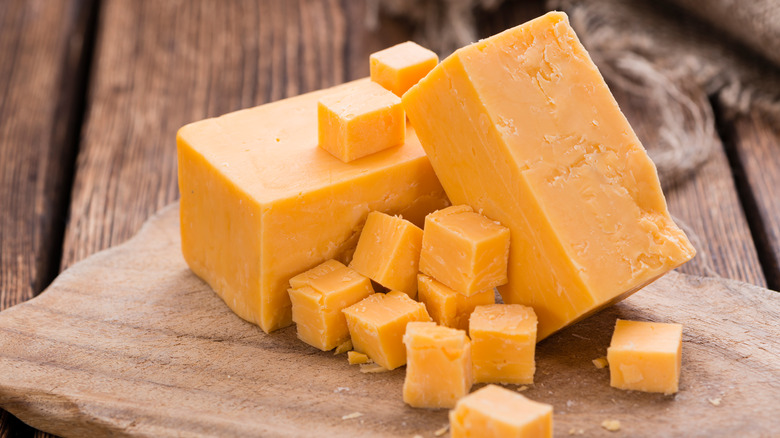There's A Science Behind Why Cheese Is Created In Wheels
If you've ever bought artisanal cheese at the grocery store, you may have noticed that cheeses come in a wheel — but why? Far more than just an aesthetic choice, there's actually a scientific reason why cheese makers craft cheeses into a circle versus, say, a star or triangle. It's all to do with mold, which might not be the most appetizing topic but is essential to cheese. Similar to aging wine (here's how long you should hold onto that bottle of red), cheese ages, and as it ages, it begins to ripen and absorb molds like P. camemberti and P. candidum. This helps break down proteins in dairy, giving cheese that soft, delicate taste.
So, what does this have to do with making cheese in a wheel? Well, the wheel shape makes it easier for the mold's microflora to spread across the entire cheese at an even pace. The last thing you would want is for your cheese to be more cultivated in one part than another, which is exactly what can happen with a rectangular shape. Mold can collect in the corners, actually causing the cheese to break down too quickly and spoil. In particular, this is a problem with cheeses that have a lot of moisture, like Brie or raclette. A cylindrical wheel avoids this issue.
Likewise, the wheel shape helps to keep the cheese sealed and safe from bacteria and insects. No wonder it's been the practice for millennia.
History of cheese wheels
What about block cheese?
Cheese wheels have historical and scientific backing, but if you do most of your grocery shopping at a grocery chain, you may have noticed a different cheese shape on store shelves. Groceries typically sell an abundance of cheese in slice-and-block format rather than as cheese wheels (although those are available too). That's thanks to modern-day industrialization. Retail chains sell block cheese both for customer convenience and because it's easier to transport.
Block cheese is easier to stock, and there's less risk of damage while being delivered to stores. With a focus on quantity at many grocery chains, blocked cheese allows grocery chains to cut down on wasted space. The shape was made to accommodate mass production and consumption. You can thank the invention of processed cheese for the block format. Developed in 1911, processed cheese was popularized by Kraft in the early 1900s. There's some argument over whether processed cheese should be counted as cheese at all, as it is made with additives and preservatives.
As such, it's typically made in an industrialized factory and doesn't follow the same practices as artisanal or regular cheese. Therefore, you won't find processed cheese molded in a cheese wheel. However, not all real cheese comes in a wheel either. Take mozzarella, which makes an excellent melting cheese, for instance. The soft cheese is typically rolled into and sold as a ball. So the shape it takes all depends on the type of cheese you're looking for.


